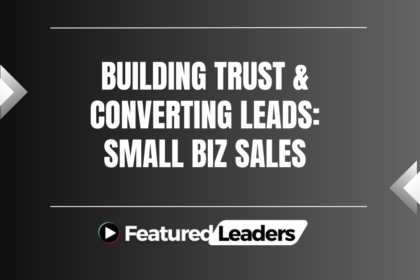Today’s organizations are rethinking leadership to curb attrition and boost real-world results. Toxic culture drives people away: research finds it predicts resignations far more than pay.
Enter servant leadership, a people-first approach that helps leaders and team members work with more trust and less stress. It asks leaders to remove obstacles, steward resources, and enable great work.
This Ultimate Guide is for leaders, HR pros, and members who want evidence-based, practical steps without extra bureaucracy. You will see clear definitions, daily behaviors, benefits, and realistic challenges.
We preview case studies from Starbucks, Zappos, GM, and Microsoft so readers can spot real behaviors that drive results. By the end, you will have a practical roadmap to help your team deliver stronger outcomes faster.
Key Takeaways
- Leadership shapes culture and predicts retention more than pay.
- Servant leadership raises trust, safety, and performance.
- Leaders must remove obstacles and support people daily.
- Practical models from major brands show this approach works.
- Readers get an actionable roadmap to improve team success.
Why This Ultimate Guide Matters Right Now
Right now, choosing how you lead matters more than budget or perks.
What you’ll get: a short, research-backed playbook that turns theory into daily routines. You will learn how servant leadership works, which employee needs it meets, and how to measure progress. This guide aims at frontline managers and senior leaders alike.
Data shows toxic culture predicts attrition 10.4x more than pay. Since leadership shapes culture more than any other factor, a shift in style is strategic. A servant approach builds psychological safety by listening, removing friction, and co-creating norms that let team members contribute fully.
User intent and what you’ll learn
- Practical behaviors to improve trust, commitment, and performance.
- How to spot and remove obstacles that slow work.
- Metrics to track engagement, safety, and retention.
How this differs from traditional styles
Traditional models centralize authority and issue commands. By contrast, servant leaders enable, support, and steward resources so employees can do their best work.
| Feature | Command-and-Control | Servant Approach |
|---|---|---|
| Decision focus | Top-down | Supportive, shared |
| Priority | Compliance | Growth and safety |
| Outcome | Short-term output | Trust, retention, performance |
Servant Leadership Defined: Origins, Philosophy, and Core Beliefs
Robert K. Greenleaf framed a different path for leaders in the 1970s: lead by serving others first. His idea called for a shift from authority toward care, development, and shared responsibility.
Robert K. Greenleaf’s seminal contribution and modern relevance
Greenleaf coined servant leadership and described the leader as “servant first.” His work asks whether those served grow healthier, wiser, and more likely to serve others in turn.
That test still fits today. Fast change and remote work demand trust, adaptability, and steady development.
From command-and-control to service-first leadership
Command-and-control centers decisions at the top. Service-first leaders enable team members with clarity, support, and shared ownership.
Result: more autonomy, faster problem solving, and clearer role expectations for employees.
Key traits: empathy, listening, humility, stewardship, and vision
- Empathy: understand others’ perspectives.
- Active listening: surface real problems and needs.
- Humility: share credit and keep learning.
- Stewardship: manage resources responsibly for long-term growth.
- Vision: balance short-term focus with future development.
“Do those served grow as persons—becoming healthier, wiser, freer, and more likely to serve others?”
These leadership principles convert to daily choices: clearer priorities, fair culture, and practical support that helps members do their best work.
The Impact of Servant Leadership on Teams
A leader who serves individual needs sets the stage for collective gains. When clarity, coaching, and the right resources arrive, team members finish work faster and with fewer errors.
From individual needs to collective performance
Serving clarity, tools, and regular feedback compounds into steady performance improvements. Clear roles and coaching reduce rework and speed decision-making.
How leaders create trust, collaboration, and loyalty
- Leaders create trust through consistent support, fairness, and follow-through.
- Trust-rich culture increases collaboration and healthy debate focused on outcomes.
- Genuine care drives loyalty: employees commit more to goals and to one another.
- A servant leader reduces friction by removing barriers, simplifying processes, and ensuring right tools are available.
- Balancing autonomy with accountability aligns strengths to shared priorities and boosts measurable performance.
“Small, consistent acts of service build the condition where teams reliably deliver above-average results.”
Culture, Trust, and Psychological Safety: The Mechanisms that Drive Results
A team’s lived culture depends on which behaviors leaders praise and which they tolerate.
How culture forms: daily signals—who gets credit, who is corrected publicly, which mistakes are hidden—shape what members believe is safe. Leadership choices set norms faster than any memo or program.
Psychological safety matters because it lets people speak up without fear. The Center for Creative Leadership defines it as the belief you won’t be punished or shamed for ideas, questions, concerns, or mistakes.
What healthy versus toxic looks like
- Toxic environments breed fear, blame, and hidden information.
- Healthy ones welcome open communication, transparent decisions, and inclusive participation.
- Data shows toxic culture predicts attrition 10.4x more than pay, so culture is a strategic priority, not a nice-to-have.
How servant leadership builds safety
Servant leaders boost employee engagement by listening without judgment, sharing decision context, and admitting mistakes. These moves build trust, clarify roles, and invite contribution from all voices.
“Psychological safety drives belonging, innovation, faster problem solving, higher satisfaction, and lower turnover.”
Simple rituals anchor this work: open Q&A sessions, short retrospectives, and public roadmaps that keep transparency and trust in the team’s daily rhythm.
Motivation and Growth: Autonomy, Mastery, and Purpose in Practice
When autonomy, skill growth, and meaning align, motivation becomes sustainable. Servant leadership builds intrinsic drive by giving members discretion, coaching, and a clear line to purpose.

Building autonomy without losing accountability
Grant decision space by defining outcomes, not micromanaging steps. When team members choose methods, they feel trusted and own results.
Protect that freedom with guardrails: shared goals, clear priorities, and short check-ins that spotlight progress and obstacles.
Developing mastery through feedback, coaching, and resources
Make growth visible with structured feedback, skill plans, and mentorship. Regular coaching conversations help employees tackle stretch assignments and convert learning into better performance.
Provide tools, time, and small wins so development compounds. This increases satisfaction and long-term growth for people and the team.
Connecting daily work to a higher purpose
Link tasks to customer impact, community outcomes, or mission goals. Public Service Motivation shows that highlighting positive effects on others lifts commitment and performance.
Practical cadence: clear expectations for autonomy, ongoing coaching for mastery, and stories or metrics that make purpose visible.
“Autonomy, mastery, and purpose create a practical path to sustained engagement.”
Servant Leadership Principles Turned into Daily Behaviors
Practical routines make values visible. Leaders translate a service-first vision into actions that help people do better work every day.
Active listening and open communication that employees feel
Practice active listening by reflecting what you heard, asking clarifying questions, and agreeing on next steps. Use short forums—standups, AMAs, retrospectives—to make open communication routine.
Transparent decision-making and role clarity to boost trust
Share decision criteria, trade-offs, and timelines so role clarity rises. Clear context helps team members prioritize and reduces hidden work.
Removing obstacles and stewarding resources so teams excel
- Audit workloads and right-size goals to support growth and development.
- Streamline approvals and shield the team from unnecessary context switching.
- Coach in the moment with brief feedback and schedule deeper development talks.
“Small acts of service—honesty, compassion, transparency—build trust and sustained satisfaction.”
Proven Benefits for Teams and Organizations
Teams that operate in high-trust systems deliver better results and stay together longer.
When leaders prioritize service, measurable gains follow. Trust, open communication, and clear support lift employee engagement and satisfaction. Companies like Starbucks, Zappos, GM, and Microsoft report cultural and performance improvements after this shift.
Higher employee engagement, satisfaction, and a sense of belonging
Engagement rises when team members feel heard and supported. That energy shows up as extra effort, lower churn, and stronger morale.
Better collaboration, problem-solving, and innovation
When trust is real, diverse ideas surface early. Teams solve risks faster and create stronger, more creative solutions.
Improved performance, retention, and long-term success
A service-first leadership style reduces friction in handoffs, speeds execution, and keeps top performers. Over time, this protects institutional knowledge and boosts customer outcomes.
- Track engagement, psychological safety, and collaboration quality as leading indicators.
- Use short surveys, retention metrics, and peer feedback to sustain gains.
| Benefit | How it works | Example outcome |
|---|---|---|
| Higher engagement | Active listening and coaching | More discretionary effort; lower turnover |
| Better collaboration | Shared decision space and safe debate | Faster problem solving; stronger innovation |
| Stronger performance | Remove obstacles; steward resources | Improved metrics and customer satisfaction |
“Supportive environments create a performance flywheel where engagement and collaboration fuel lasting success.”
Challenges, Trade-Offs, and When Servant Leadership May Not Fit
Certain contexts expose limits in any servant-first strategy and call for adaptation. Good leaders spot when speed, authority, or safety must take priority over consensus.
Balancing service with fast, decisive action
In crises, turnarounds, and safety-critical work, a more directive stance can save time and lives. Acknowledge these moments and set shorter decision timelines so service does not slow response.
Perceptions of authority in competitive or regulated contexts
In tight markets or regulated industries, leaders must pair service with clear authority. State non-negotiable standards, clarify decision rights, and act quickly to keep credibility.
Supporting high performers without micromanaging
High-performing members need context, resources, and space. Offer strategic guidance, then protect autonomy so employees feel trusted, not controlled.
- Clarify escalation paths and non-negotiables to preserve accountability.
- Demonstrate expertise and consistent results to earn respect.
- Set boundaries and practice self-care to avoid burnout while supporting others.
“Choosing the right approach for a moment is itself a service to your team and mission.”
How to Implement a Servant Leadership Approach
Start small: real change begins with honest self-reflection and steady practice. Invest in self-awareness so leaders build empathy, humility, and emotional intelligence. These qualities form trust when matched with compassion, honesty, and transparency.
Start with self-awareness
Develop skills through feedback, reflection, and coaching. Practice active listening and invite candid input so intent and impact align.
Codify principles into norms
Turn leadership principles into clear team rituals: weekly wins, retrospectives, skip-level listening sessions, and transparent roadmaps. Norms keep culture consistent across changes.
Measure what matters
Track employee engagement, trust, collaboration quality, and performance. Use pulse surveys and simple metrics to guide improvements.
Real-world models
Learn from examples: partner benefits at Starbucks, Zappos’ empowerment, GM’s transparent problem solving, and Microsoft’s growth mindset under Satya Nadella.
“Small routines and honest measurement make a leadership approach repeatable and scalable.”
- Map friction in your process and remove blockers.
- Share decision rationale when time or trade-offs are tight.
- Equip managers with toolkits for open communication and fair accountability.
Conclusion
A closing challenge: measure whether those you support are growing. , Use Greenleaf’s test as a simple yardstick: do people become healthier, wiser, and more autonomous after your effort?
When leaders serve first, trust rises and a team does smarter work. This guide traced origins, core traits, daily behaviors, clear benefits, and honest trade-offs so you can act with confidence.
Start small. Try one listening ritual, one transparency practice, and remove one obstacle each week to build momentum toward real success and steady growth.
Reflect on commitment and track satisfaction with the measures we outlined. A durable style keeps people at the center while staying focused on results that matter.
FAQ
What is servant leadership and how does it differ from traditional leadership?
Servant leadership is a people-first approach where leaders prioritize team members’ needs, growth, and wellbeing. Unlike top-down models that focus on command and control, this style emphasizes empathy, active listening, stewardship, and shared purpose. Teams gain autonomy and clearer roles, which boosts trust and engagement.
Who developed the concept and why does it still matter?
Robert K. Greenleaf introduced the idea in the 1970s. It matters today because modern workplaces need psychological safety, inclusion, and collaboration to adapt fast. Companies such as Starbucks and Microsoft show how service-oriented leadership supports innovation and retention.
How does this approach improve team performance?
Leaders who remove obstacles, provide resources, and offer coaching enable people to focus on outcomes. That raises motivation, problem-solving, and long-term performance while lowering turnover and boosting employee satisfaction.
What behaviors should leaders practice daily to be effective servants?
Practice active listening, transparent decision-making, role clarity, and consistent feedback. Steward resources to free teams from roadblocks and create rituals that reinforce shared values and purpose.
Can servant leadership work during crises or rapid change?
Yes, but it requires balancing service with decisiveness. In urgent situations, leaders must act clearly while still communicating reasons, showing empathy, and keeping teams aligned to mission-critical goals.
Is there a risk of being seen as weak or indecisive?
Perception risks exist if leaders overemphasize consensus or avoid hard choices. Strong servant leaders combine humility with clear boundaries and accountability to maintain authority without eroding trust.
How do you measure success when adopting this style?
Track engagement, trust scores, retention, collaboration metrics, and performance outcomes. Qualitative feedback from coaching conversations and pulse surveys reveals cultural shifts and psychological safety improvements.
Which organizations successfully use these principles?
Examples include Starbucks, Zappos, General Motors, and Microsoft. They translate servant principles into hiring practices, leadership training, and cultural rituals that support inclusion and long-term growth.
How do you support high performers without micromanaging?
Offer autonomy with clear goals, regular coaching, and tailored development plans. Remove administrative barriers so top contributors focus on high-impact work while maintaining accountability.
What role does psychological safety play in this approach?
Psychological safety is central. Open communication, transparency, and inclusions let people speak up, innovate, and learn from failure. That environment drives engagement and collective problem-solving.






